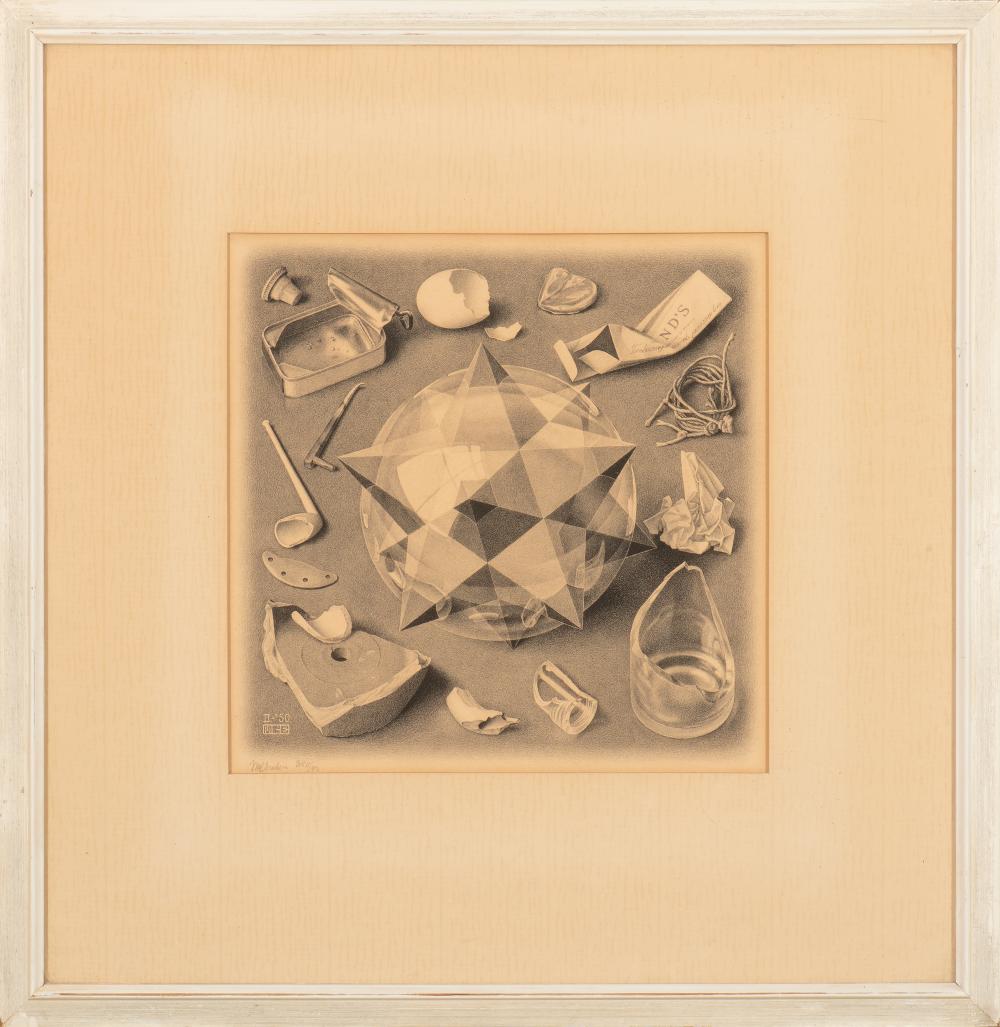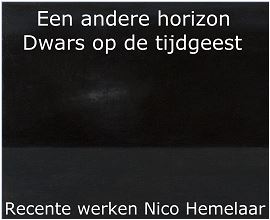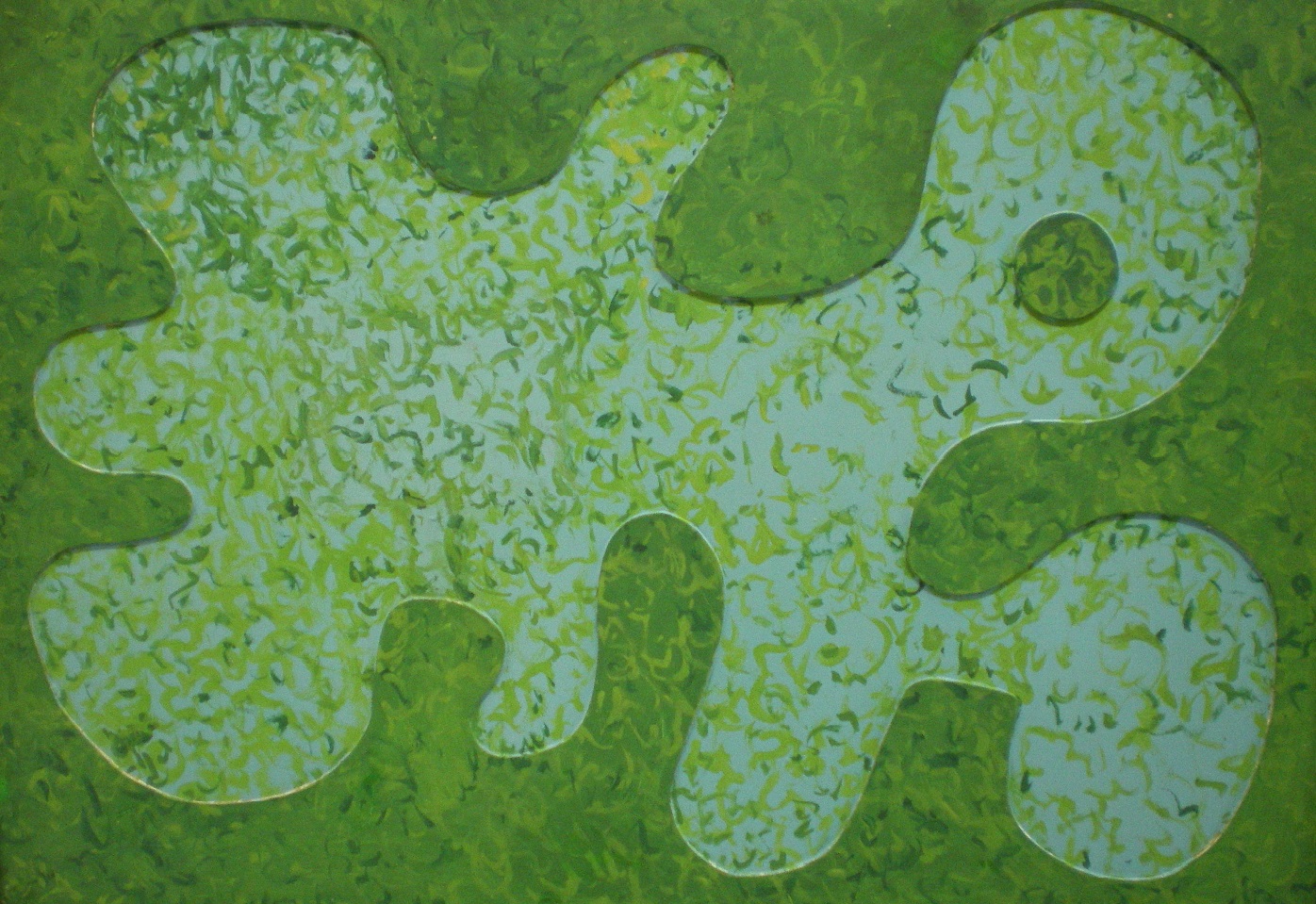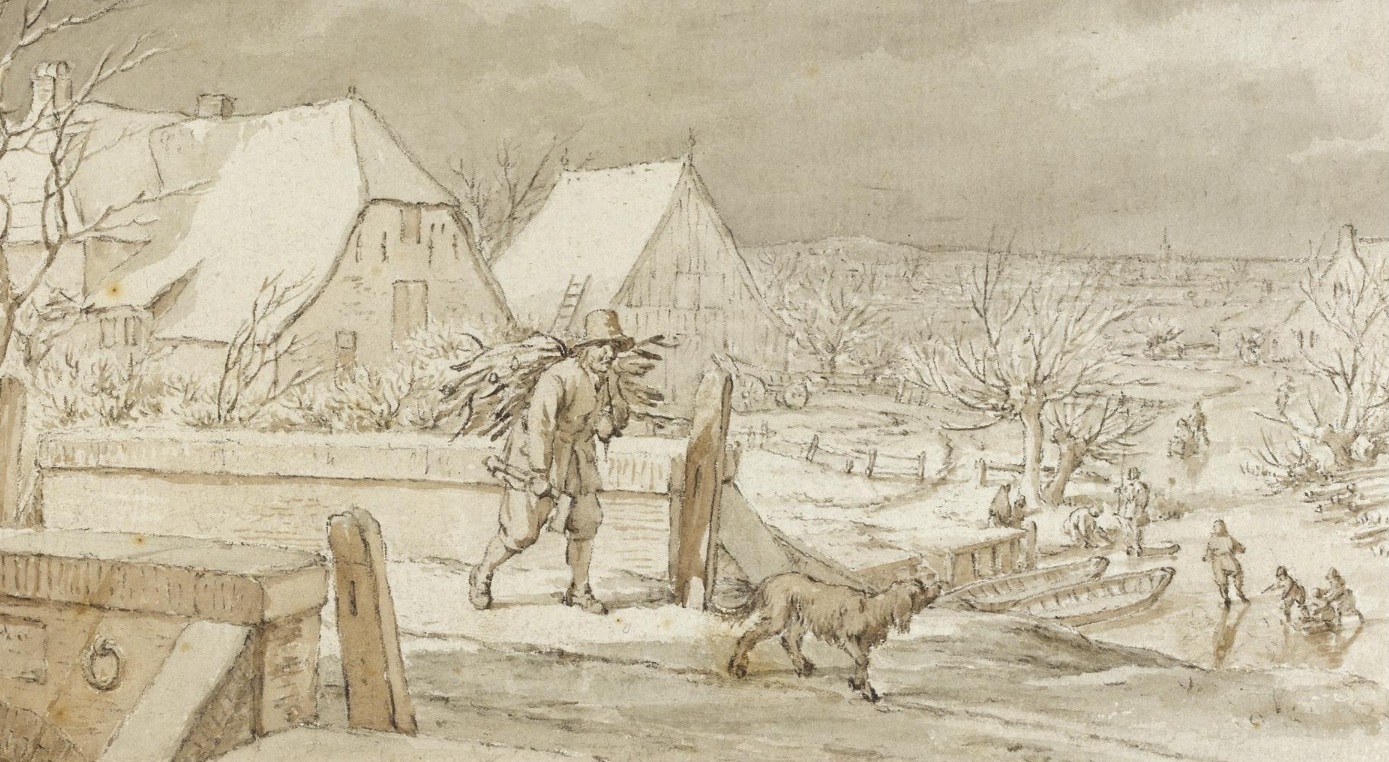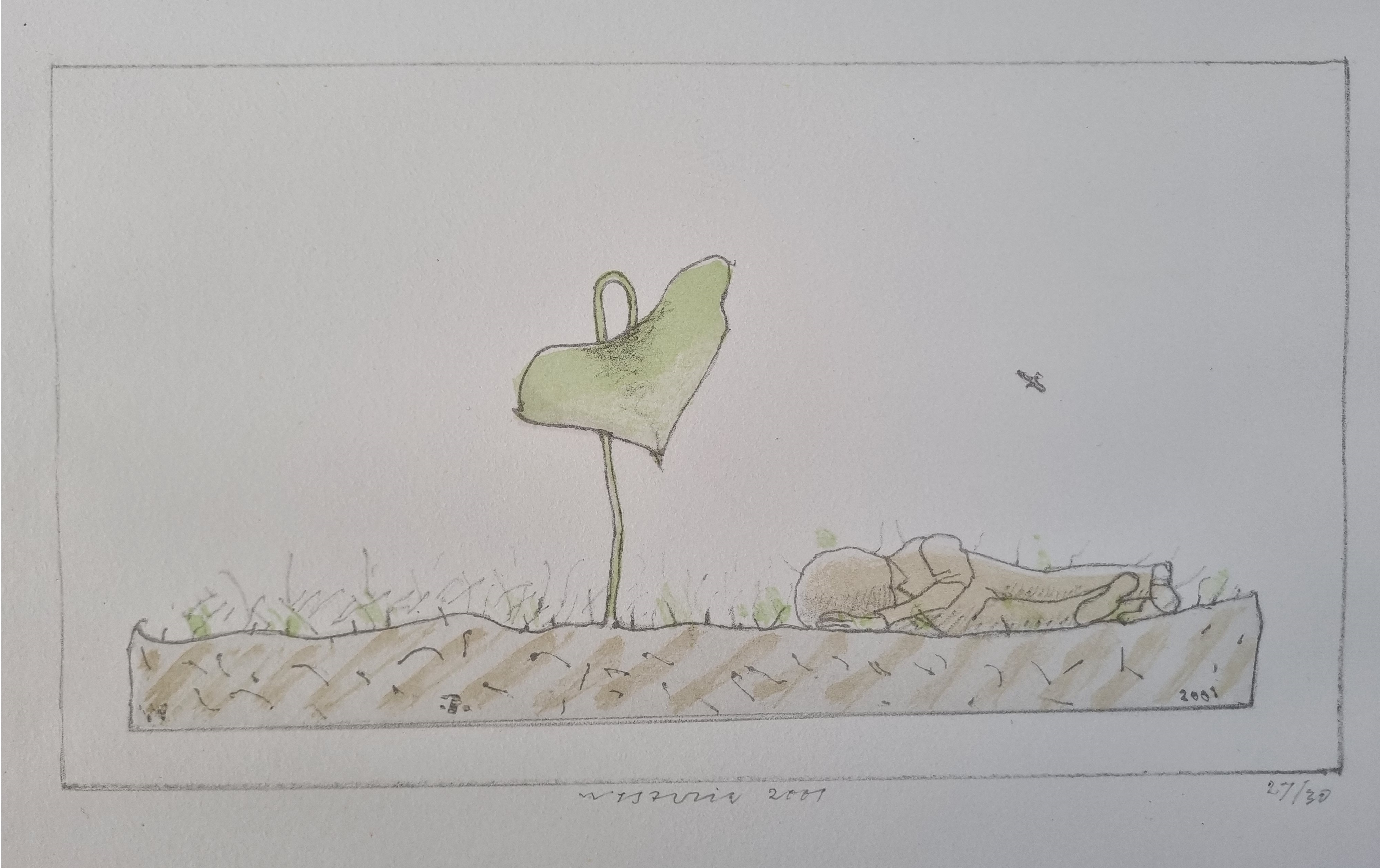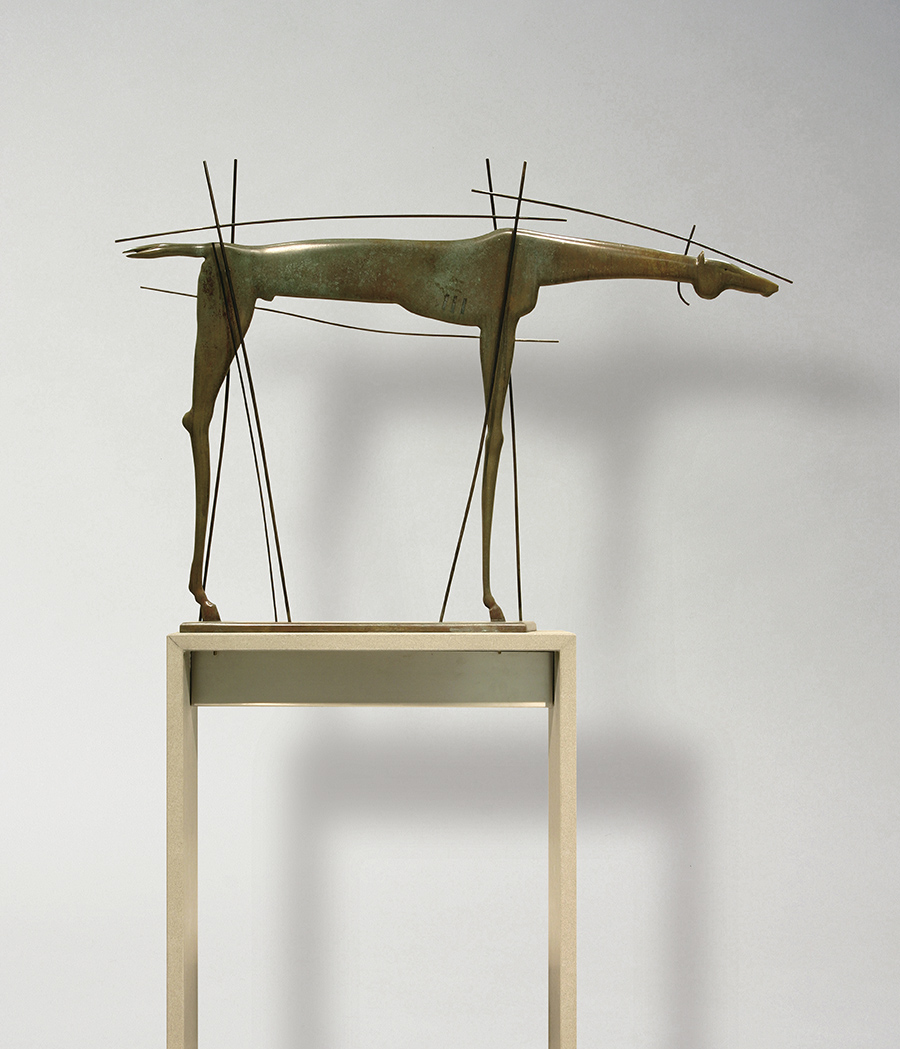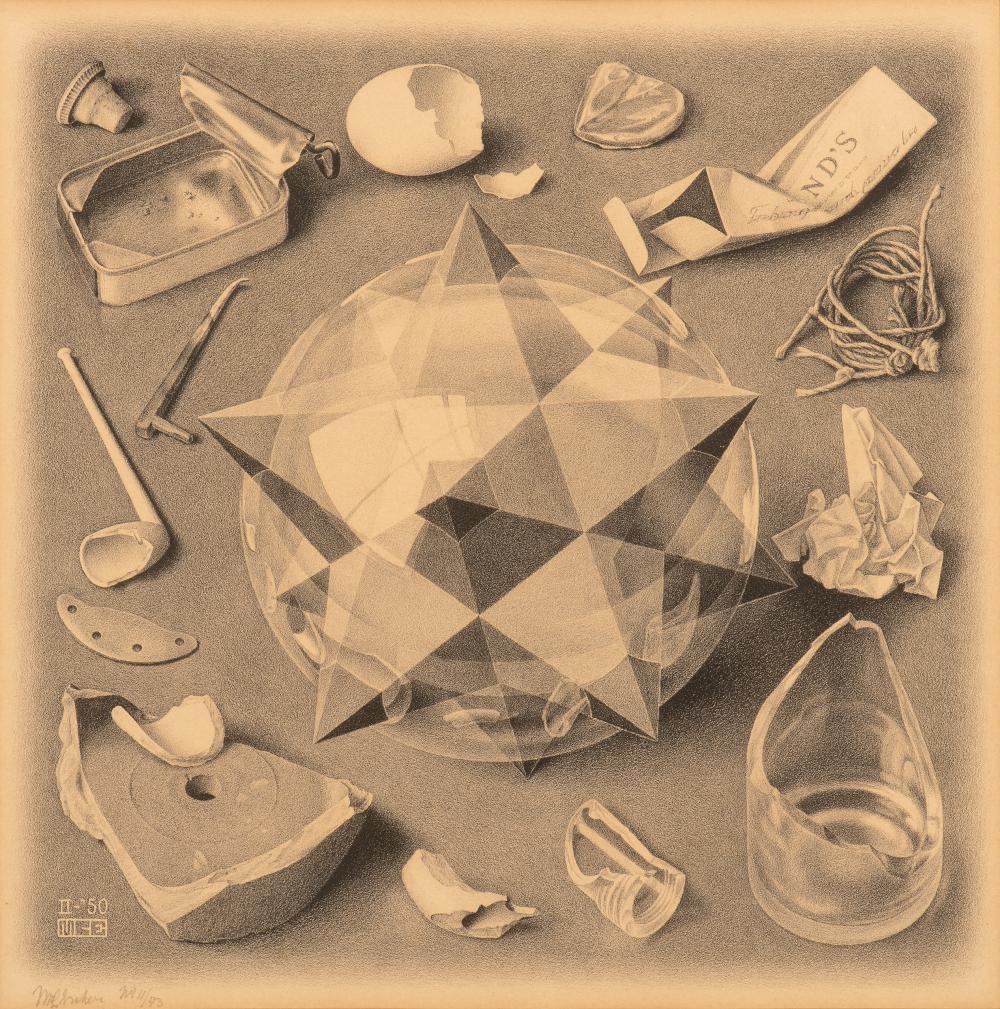
Beschrijving
Lithograph in black, signed and numbered in pencil 'MCEscher' (lower left), monogrammed and dated in the stone 'MCE II-'50' (lower left); framed under passe-partout behind glass. Sheet attached with paper tape to the passe-partout (along the reverse edges), sheet uncut and discoloured (within the margins of the passe-partout), very slightly cockled, pinholes in the corners, minor spot of paper scuffing in the upper right, one tiny paper damage in the lower left corner (top of the first letter of the signature slightly affected), overall in good condition.
Literature: Bool, F.H., et al. M.C. Escher: his life and complete graphic work: with a fully illustrated catalogue. New York, Harry N. Abrams, 2000, p. 299, nr. 366
Notes: The original print from the series of 43 copies only. "In April 1952, 400 prints were made of the lithograph Contrast (Order and Chaos). By machine, due to the enormous circulation, but under the watchful eye of Escher. It was a commission from the VAEVO (Association for the Promotion of the Aesthetic Element in Secondary Education), which would be distributing the prints to schools in the Netherlands. This would render his work accessible to young people". It emphasizes the special significance this work had for Escher: "In February 1950 Escher produced Contrast (Order and Chaos). Occupying centre stage in this print is a perfectly symmetrical spatial figure: an almost transparent stellated dodecahedron that has been merged with a glass sphere. The object is surrounded by a mishmash of broken and otherwise disorderly objects. The title is self-explanatory: the crystal represents order and discipline, whereas the objects around it symbolise chaos. With the benefit of hindsight, it seems like Escher was sensing something when he made this print. His fame began to soar in the 1950s. So too would the chaos that fame brought his way" (both quotes from the website of the Escher in Het Paleis [Escher in The Palace] museum, The Hague). Also in the collection of the Rijksmuseum, Amsterdam.
Tegenstelling Orde en Chaos / Contrast Order and Chaos (1950)
Escher, Maurits Cornelis
(Leeuwarden, 17 juni 1898
-
Hilversum,
27 maart 1972)
Details
- Databanknummer:
- 87149
- Lotnummer:
- -
- Advertentietype
- Archief
- Instelling:
- Adams Amsterdam Auctions BV.
- Veilingdatum:
- -
- Veilingnummer:
- -
- Stad
- -
- Limietprijs
- -
- Aankoopprijs
- -
- Verkoopprijs
- -
- Hamerprijs
- -
- Status
- Verkocht
Technische details
- Kunstvorm:
- Grafische kunst
- Technieken:
- Litho
- Dragers:
- Papier
- Lengte:
- 29 cm
- Breedte:
- 29 cm
- Hoogte:
- -
- Oplage:
- 11/43
Beschrijving
Lithograph in black, signed and numbered in pencil 'MCEscher' (lower left), monogrammed and dated in the stone 'MCE II-'50' (lower left); framed under passe-partout behind glass. Sheet attached with paper tape to the passe-partout (along the reverse edges), sheet uncut and discoloured (within the margins of the passe-partout), very slightly cockled, pinholes in the corners, minor spot of paper scuffing in the upper right, one tiny paper damage in the lower left corner (top of the first letter of the signature slightly affected), overall in good condition.
Literature: Bool, F.H., et al. M.C. Escher: his life and complete graphic work: with a fully illustrated catalogue. New York, Harry N. Abrams, 2000, p. 299, nr. 366
Notes: The original print from the series of 43 copies only. "In April 1952, 400 prints were made of the lithograph Contrast (Order and Chaos). By machine, due to the enormous circulation, but under the watchful eye of Escher. It was a commission from the VAEVO (Association for the Promotion of the Aesthetic Element in Secondary Education), which would be distributing the prints to schools in the Netherlands. This would render his work accessible to young people". It emphasizes the special significance this work had for Escher: "In February 1950 Escher produced Contrast (Order and Chaos). Occupying centre stage in this print is a perfectly symmetrical spatial figure: an almost transparent stellated dodecahedron that has been merged with a glass sphere. The object is surrounded by a mishmash of broken and otherwise disorderly objects. The title is self-explanatory: the crystal represents order and discipline, whereas the objects around it symbolise chaos. With the benefit of hindsight, it seems like Escher was sensing something when he made this print. His fame began to soar in the 1950s. So too would the chaos that fame brought his way" (both quotes from the website of the Escher in Het Paleis [Escher in The Palace] museum, The Hague). Also in the collection of the Rijksmuseum, Amsterdam.
Aangeboden kunst
Een selectie uit ons kunstaanbod

